At a glance: Key players, findings in Penn State report
An internal probe into the Penn State child sex abuse scandal found that top university officials concealed allegations of abuse by ex-assistant football coach Jerry Sandusky. Read the full report (PDF) » | Full Story »
Key players
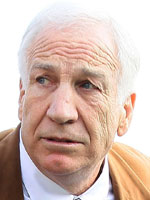
Gerald "Jerry" Sandusky
Founder of The Second Mile and retired Penn State assistant football coach; convicted of sexually abusing young boys he met through the non-profit organization over a period of at least 15 years.
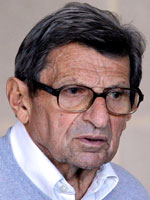
Joe Paterno
Former Penn State head football coach; at 409 wins has the most wins of any major college football coach; coached at Penn State for a total of 61 years, including 45 years as head coach; died January 22, 2012, at age 85.

Graham B. Spanier
President of Penn State from September 1, 1995 to November 9, 2011.
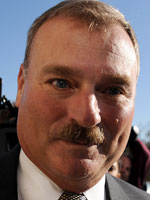
Gary Schultz
Former vice president for finance and business at Penn State; charged with one count of felony perjury and one count of failure to report abuse allegations.
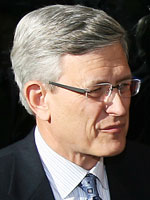
Tim Curley
Former Penn State athletic director; charged with one count of felony perjury and one count of failure to report abuse allegations.
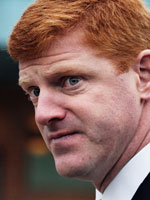
Michael McQueary
Penn State receivers coach who allegedly witnessed the rape of a young boy by Jerry Sandusky in a Penn State locker room in 2002; placed on administrative leave.
Timeline of events
Below are selections from the timeline of events as published by the Freeh report, ending with Sandusky's conviction in June 2012. Entries have been edited for clarity.
Schultz is informed of the investigation and notifies Spanier and Curley. Schultz's confidential notes about Sandusky state: "Behavior -- at best inappropriate @ worst sexual improprieties" and "At min -- Poor Judgment." Schultz also notes: "Is this opening of pandora's box?" and "Other children?"
Curley tells Schultz and Spanier that he has "touched base with" Paterno about the incident. Later, Curley asks Schultz for an update, saying "Coach is anxious to know where it stands."
A University Police detective and Department of Public Welfare caseworker interview Sandusky. Sandusky admits hugging Victim 6 in the shower but says there was nothing "sexual about it." The detective advises Sandusky not to shower with any child. Sandusky says he won't.
Schultz e-mails Curley and Spanier: "I think the matter has been appropriately investigated and I hope it is now behind us."
As the retirement package is being finalized, Curley requests the emergency rehire of Sandusky for the 1999 football season, which is approved.
A janitor observes the assault, but does not report it for fear that "they'll get rid of all of us."
On Sunday, Paterno reports the incident to Curley and Schultz. Schultz then consults with university outside counsel.
Schultz asks Harmon if the report of the 1998 incident is in police files; Harmon responds that it is.
Schultz concurs with the plan, saying in an e-mail, "this is a more humane and upfront way to handle this." Schultz adds, "we can play it by ear" regarding informing DPW of the assault.
In the subsequent two meetings, the board asks no questions about the investigation.
Criminal charges are filed against Sandusky, Schultz and Curley.
Findings from the report
The Freeh report said "the avoidance of the consequences of bad publicity" as a significant cause behind the "failure to protect child victims." The report also cited:
- "A striking lack of empathy for child abuse victims by the most senior leaders of the University.
- "A failure by the Board to exercise its oversight functions in 1998 and 2001 by not having regular reporting procedures or committee structures in place to ensure disclosure to the Board of major risks to the University.
- "A failure by the Board to make reasonable inquiry in 2011 by not demanding details from Spanier and the General Counsel about the nature and direction of the grand jury investigation and the University's response to the investigation.
- "A President who discouraged discussion and dissent.
- "A lack of awareness of child abuse issues, the Clery Act, and whistleblower policies and protections."


